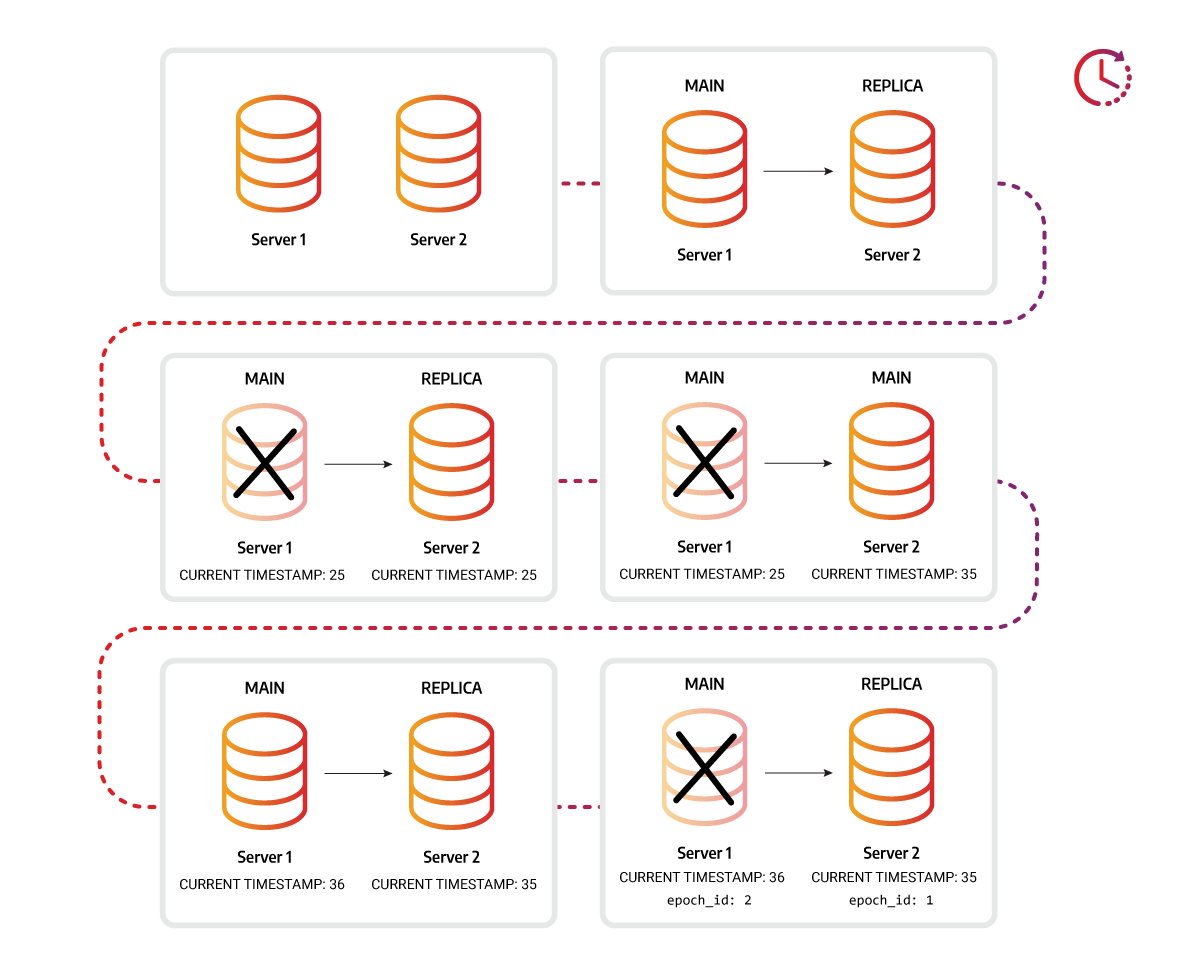Replication
Uninterrupted data and operational availability in production systems are critical and can be achieved in many ways. In Memgraph we opted for replication.
In distributed systems theory the CAP theorem, also named Brewer's theorem, states that any distributed system can simultaneously guarantee two out of the three properties:
- Consistency (C) - every node has the same view of data at a given point in time
- Availability (A) - all clients can find a replica of the data, even in the case of a partial node failure
- Partition tolerance (P) - the system continues to work as expected despite a partial network failure
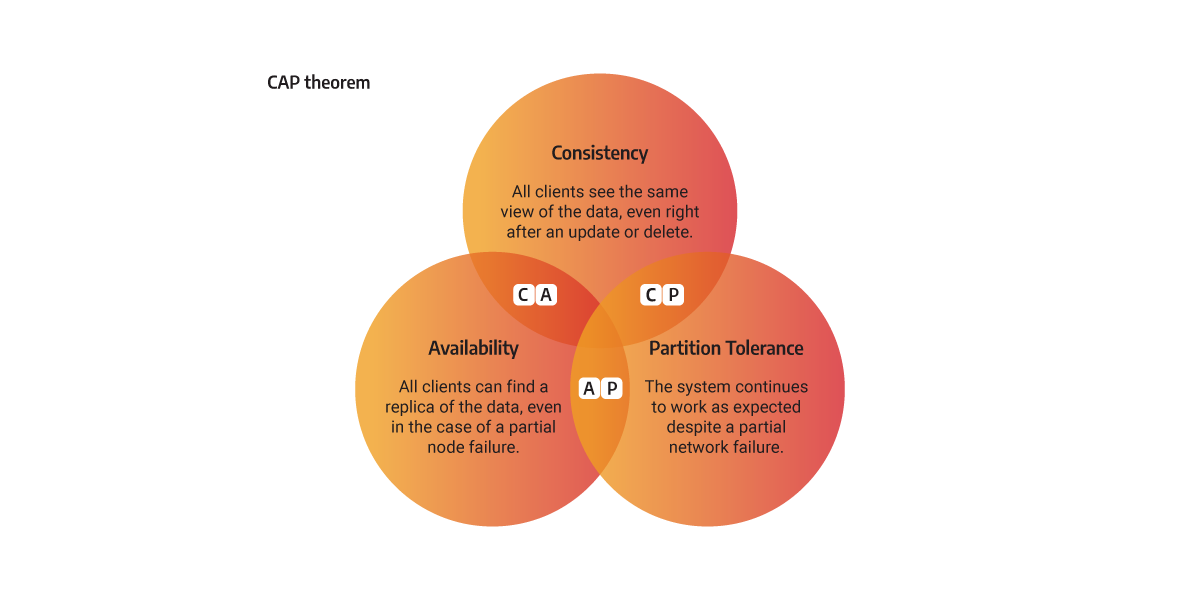
Most of the Memgraph use-cases do not benefit from well-known algorithms that strive to achieve all three CAP properties, such as Raft, because due to their complexity they produce performance issues. Memgraph use-cases are based on running analytical graph workloads on real-time data, demanding a simpler concept such as replication.
Replication consists of replicating data from one storage to one or several other storages. The downside of its simplicity is that only two out of three CAP properties can be achieved.
Replication implementation in Memgraph
To enable replication, there must be at least two instances of Memgraph in a cluster. Each instance has one of two roles: MAIN or REPLICA. The MAIN instance accepts read and write queries to the database and REPLICA instances accept only read queries.
The changes or state of the MAIN instance are replicated to the REPLICA instances in a SYNC or ASYNC mode. The SYNC mode ensures consistency and partition tolerance (CP), but not availability for writes. The ASYNC mode ensures system availability and partition tolerance (AP), while data can only be eventually consistent.
By using the timestamp, the MAIN instance knows the current state of the REPLICA. If the REPLICA is not synchronized with the MAIN instance, the MAIN instance sends the correct data for synchronization as WAL files.
If the REPLICA is so far behind the MAIN instance that the synchronization using WAL files is impossible, Memgraph will use snapshots.
Replication modes
From version 2.4 it is no longer possible to specify a timeout when registering a SYNC replica. To mimic this behavior in higher releases, please use ASYNC replication instead.
Replication mode defines the terms by which the MAIN instance can commit the changes to the database, thus modifying the system to prioritize either consistency or availability. There are two possible replication modes implemented in Memgraph replication:
- SYNC
- ASYNC
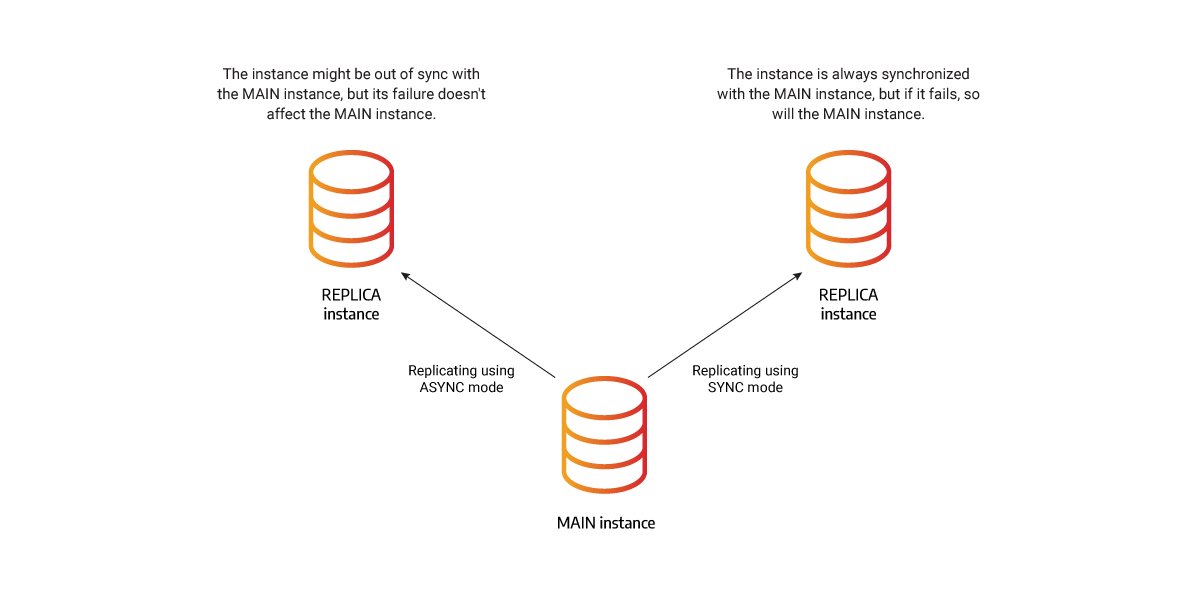
When a REPLICA instance is registered and added to the cluster, it will start replicating in ASYNC mode. That will allow it to catch up to the current state of the MAIN instance. When the REPLICA instance synchronizes with the MAIN instance, the replication mode will change according to the mode defined during registration.
SYNC replication mode
SYNC mode is the most straightforward replication mode in which the main storage thread waits for the response and cannot continue until the response is received or a timeout is reached.
The following diagrams express the behavior of the MAIN instance in cases when SYNC REPLICA doesn't answer within the expected timeout.
SYNC REPLICA going down when creating index, uniqueness constraint or existence constraint
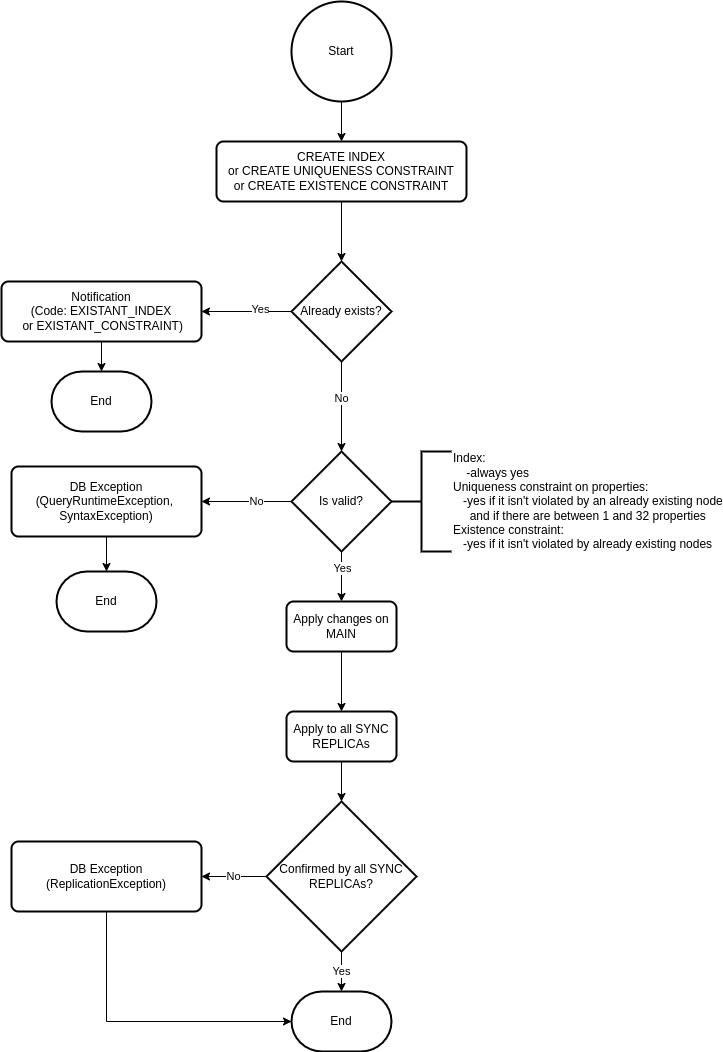
SYNC REPLICA going down when dropping index, uniqueness constraint or existence constraint
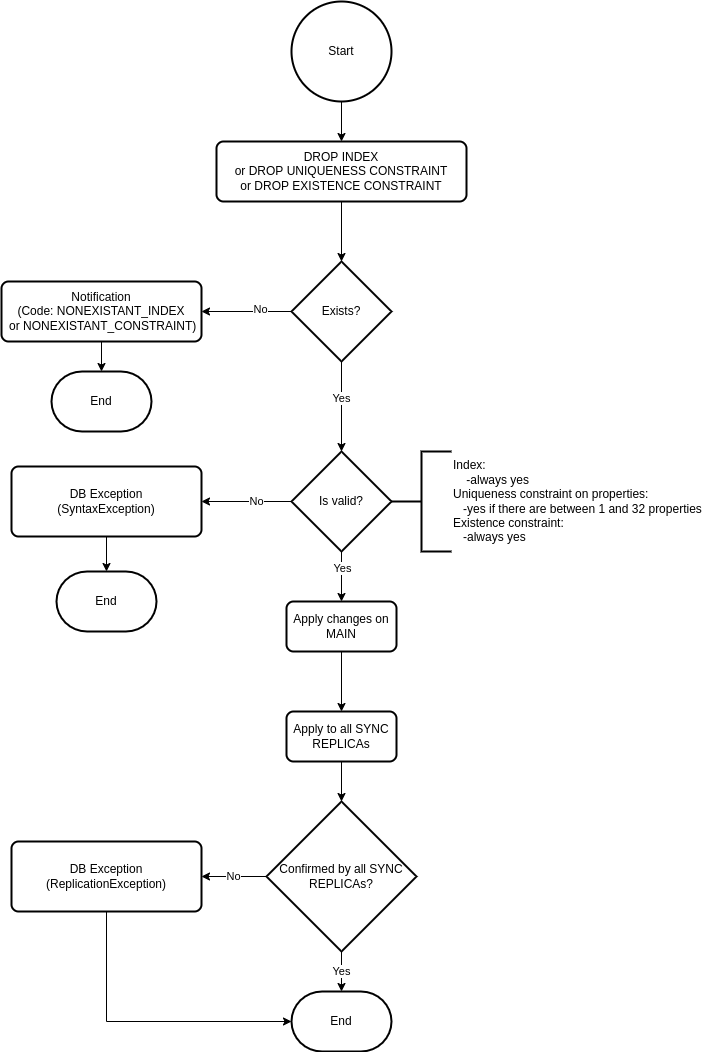
SYNC REPLICA going down adding/updating/deleting data
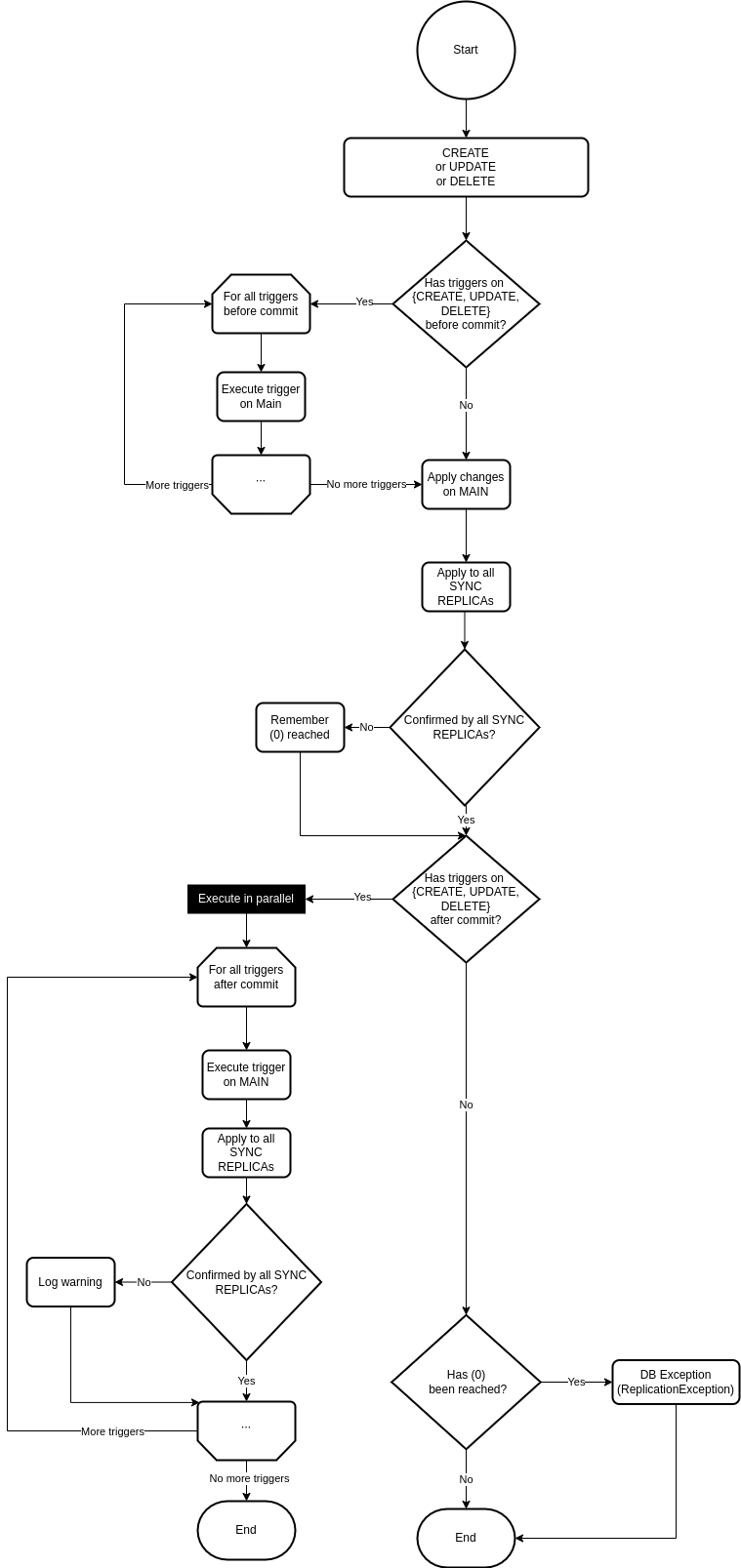
ASYN replication mode
In the ASYNC replication mode, the MAIN instance will commit a transaction without receiving confirmation from REPLICA instances that they have received the same transaction. This means that the MAIN instance does not wait for the response from the REPLICA instances in the main thread but in some other thread.
A new thread can be created every time a transaction needs to be replicated to the REPLICA instance, but because transactions are committed often and use a lot of resources, each REPLICA instance has one permanent thread connecting it with the MAIN instance. Using this background thread, the MAIN instance pushes replication tasks to the REPLICA instance, creates a custom thread pool pattern, and receives confirmations of successful replication from the REPLICATION instance.
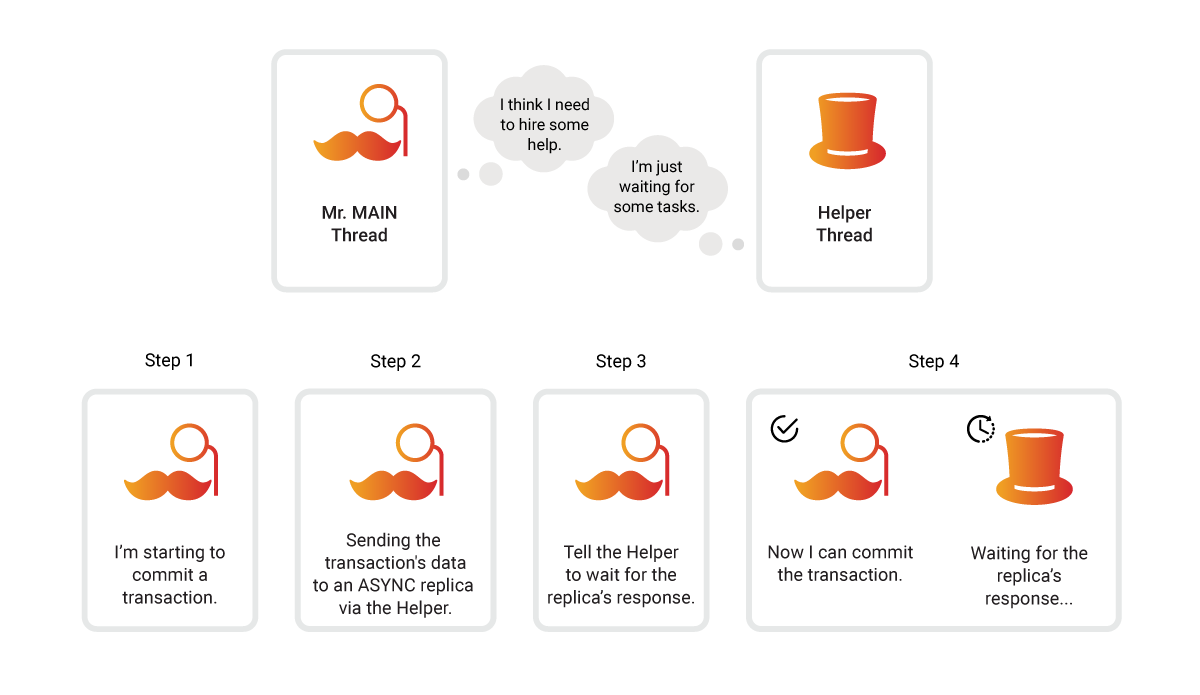
ASYNC mode ensures system availability and partition tolerance.
Synchronizing instances
By comparing timestamps, the MAIN instance knows when a REPLICA instance is not synchronized and is missing some earlier transactions. The REPLICA instance is then set into a RECOVERY state, where it remains until it is fully synchronized with the MAIN instance.
The missing data changes can be sent as snapshots or WAL files. Snapshot files represent an image of the current state of the database and are much larger than the WAL files, which only contain the changes, deltas. Because of the difference in file size, Memgraph favors the WAL files.
While the REPLICA instance is in the RECOVERY state, the MAIN instance calculates the optimal synchronization path based on the REPLICA instance's timestamp and the current state of the durability files while keeping the overall size of the files necessary for synchronization to a minimum.
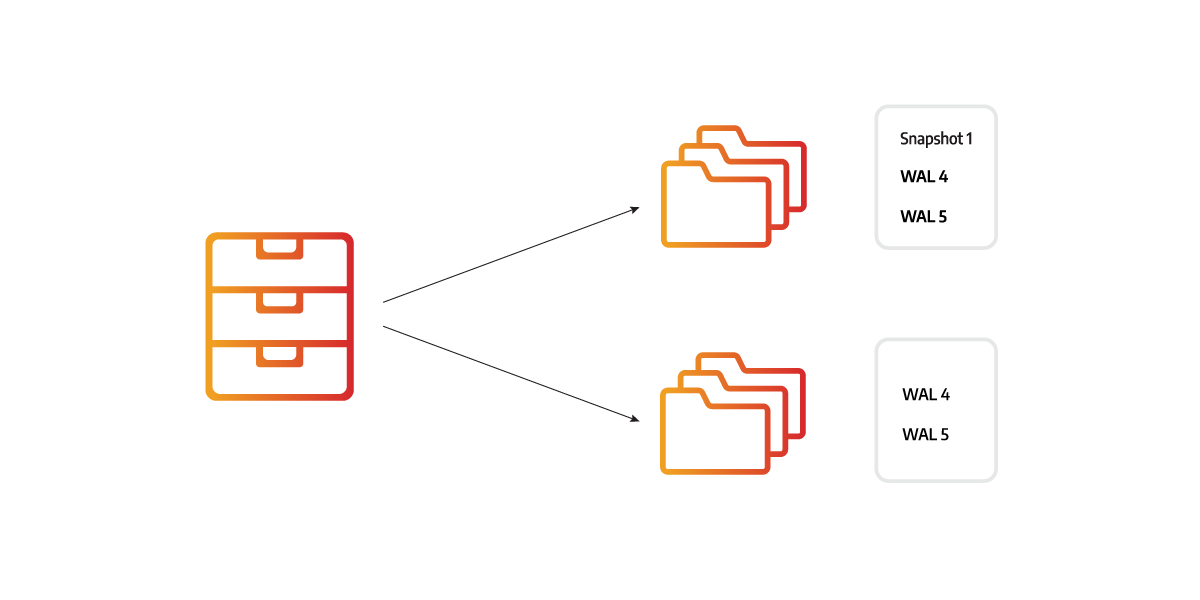
Imagine there were 5 changes made to the database. Each change is saved in a WAL file, so there are 5 WAL files, and the snapshot was created after 2 changes. The REPLICA instance can be synchronized using a snapshot and the 3 latest WAL files or using 5 WAL files. Both options would correctly synchronize the instances, but 5 WAL files are much smaller.
The durability files are constantly being created, deleted, and updated. Also, each replica could need a different set of files to sync. There are several ways to ensure that the necessary files persist and that instances can read the WAL files currently being updated without affecting the performance of the rest of the database.
Locking durability files
Durability files are also used for recovery and are periodically deleted to eliminate redundant data. The problem is that they can be deleted while they are being used to synchronize a REPLICA with the MAIN instance.
To delay the file deletion, Memgraph uses a file retainer that consists of multiple lockers. Threads can store and lock the files they found while searching for the optimal recovery path in the lockers, thus ensuring the files will still exist once they are sent to the REPLICA instance as a part of the synchronization process. If some other part of the system sends a deletion request for a certain file, the file retainer first checks if that file is locked in a locker. If it is not, it is deleted immediately. If the file is locked, the file retainer adds the file to the deletion queue. The file retainer will periodically clean the queue by deleting the files that are no longer locked inside the locker.
Writing and reading files simultaneously
Memgraph internal file buffer is used when writing deltas to WAL files, and mid-writing, the content of one WAL file can be divided across two locations. If at that point that WAL file is used to synchronize the REPLICA instance, once the data is being read from the internal buffer, the buffer can be flushed, and the REPLICA could receive an invalid WAL file because it is missing a chunk of data. It could also happen that the WAL file is sent before all the transactions are written to the internal buffer.
To avoid these issues, flushing of that internal buffer is disabled while the current WAL is sent to a REPLICA instance. To get all the data necessary for the synchronization, the replication thread reads the content directly from the WAL file, then reads how many bytes are written in the buffer and copies the data to another location. Then the flushing is enabled again, and the transaction is replicated using the copied buffer. Because the access to the internal buffer was not blocked, new data can be written. The content of the buffer (including any new data) is then written in a new WAL file that will be sent in the next synchronization process.
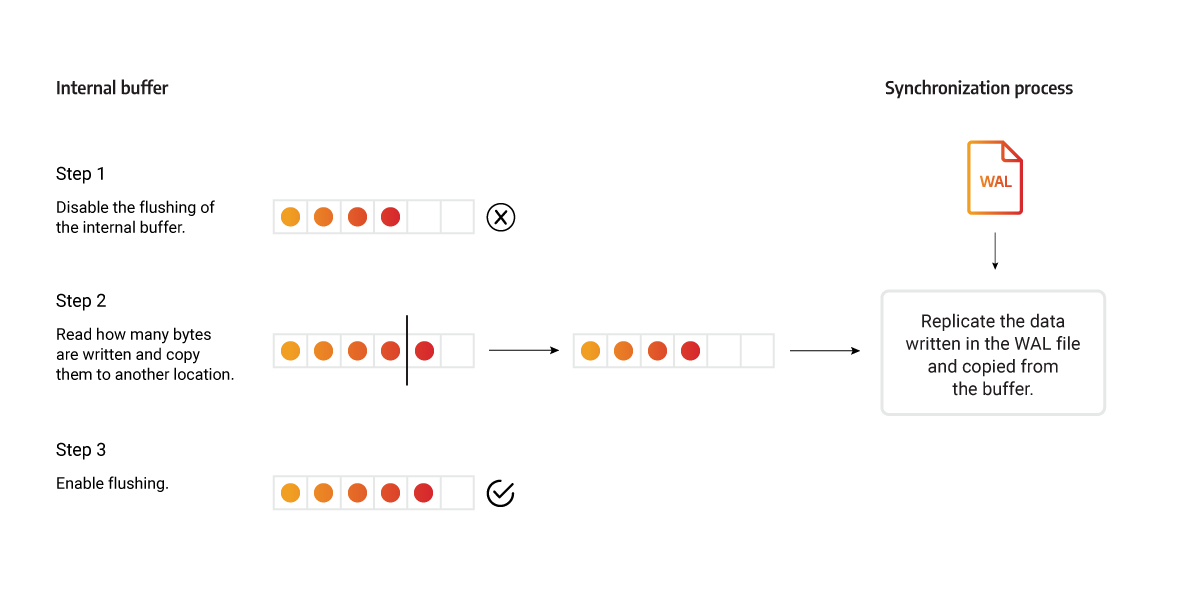
Fixing timestamp consistency
Timestamps are used to compare the state of the REPLICA instance in comparison to the MAIN instance.
At first, we used the current timestamp without increasing its value for global operations, like creating an index or creating a constraint. By using a single timestamp, it was impossible to know which operations the REPLICA had applied because sequential global operations had the same timestamp. To avoid this issue, a unique timestamp is assigned to each global operation.
As replicas allow read queries, each of those queries was assigned with its own timestamp. Those timestamps caused issues when the replicated write transactions were assigned an older timestamp. A read transaction would return different data from the same read query if a transaction was replicated between those two read transactions which obstructed the snapshot isolation. To avoid this problem, the timestamp on REPLICA instances isn't increased because the read transactions don't produce any changes, so no deltas need to be timestamped.
Incompatible instances
To avoid issues when the durability files of two different database instances are stored in the same folder, a unique ID is assigned to each storage instance. The same ID is then assigned to the durability files. Replication uses the instance ID to validate that the files and the database are compatible.
A unique ID epoch_id is also assigned each time an instance is run as the MAIN
instance in the replication cluster to check if the data is compatible for
replication. The epoch_id is necessary when the original MAIN instance fails,
a REPLICA instance becomes a new MAIN, and after some time, the original MAIN
instance is brought back online. If no transactions were run on the original
MAIN instance, the difference in timestamps will indicate that it is behind the
new MAIN, and it would be impossible to set the original MAIN-REPLICA
relationship. But if the transactions were run on the original MAIN after it was
brought back online, the timestamp would be of no help, but the epoch_id would
indicate incomparability, thus preventing the original MAIN from reclaiming its
original role.
